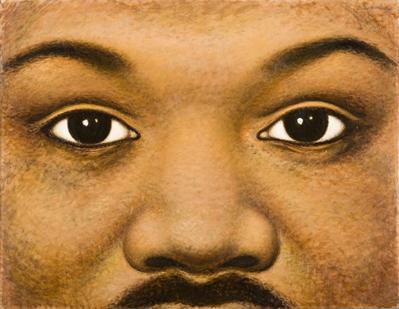The art of Edward Biberman is currently on view in a special installation, and in honor of Martin Luther King Jr. Day, this Monday, I want to make sure our audiences know about his painting of Dr. King on display. Acquired last June thanks to the generosity of the American Art Council, I Had a Dream was Biberman’s response to Dr. King’s 1968 assassination. Prominently placed in the exhibition space, Dr. King’s eyes are unavoidable and draw you into his vision and the gallery.
Edward Biberman moved from the East Coast to Los Angeles in 1936 and is best known for later paintings such as The White Fire Escape, in LACMA's collection. Such urban scenes reveal his affinity for the seemingly mundane details of midcentury modern architecture, which he illuminated through his attention to the light, shadow, and geometry of both subject matter and composition. But throughout his career he created important figurative paintings of labor, social struggle, and political tension, such as Conspiracy (1955), as well as significant portraiture. His portraits of African American cultural and political leaders are especially noteworthy: he created a monumental portrait of Paul Robeson, and his Lena Horne is in the collection of the National Portrait Gallery where it has graced enormous banners on their façade. I Had a Dream is unique for Biberman in that it zooms in on the civil rights leader’s face. Though we see only Dr. King’s eyes, nose, and mustache, his iconic features are instantly recognizable. The searing intensity of his gaze is not confrontational but steadfast and visionary. This is a portrait with which all can connect. A large and powerful painting like I Had a Dream not only represents one of the most important figures of the twentieth century but demonstrates the devastating impact of Dr. King’s death on all Americans and can remind us of the significance of his legacy today.



